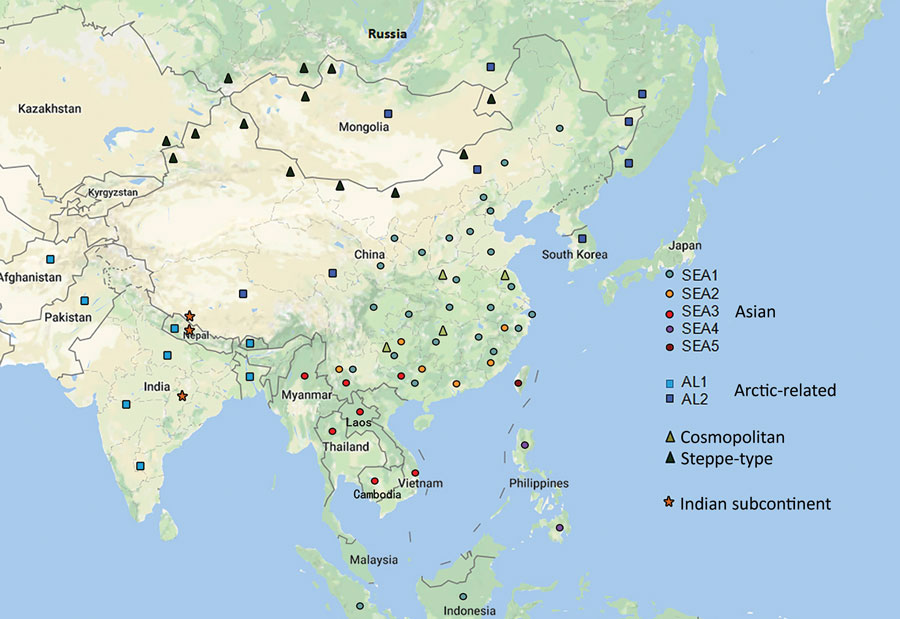Volume 26, Number 12—December 2020
Synopsis
Animal Rabies Surveillance, China, 2004–2018
Figure 2

Figure 2. Geographic distribution of rabies virus clades and subclades in China and neighboring countries. The sequence information is from this study and GenBank (Appendix Table 3). SEA, Southeast Asia.
1These authors contributed equally to this article.
Page created: September 01, 2020
Page updated: November 19, 2020
Page reviewed: November 19, 2020
The conclusions, findings, and opinions expressed by authors contributing to this journal do not necessarily reflect the official position of the U.S. Department of Health and Human Services, the Public Health Service, the Centers for Disease Control and Prevention, or the authors' affiliated institutions. Use of trade names is for identification only and does not imply endorsement by any of the groups named above.